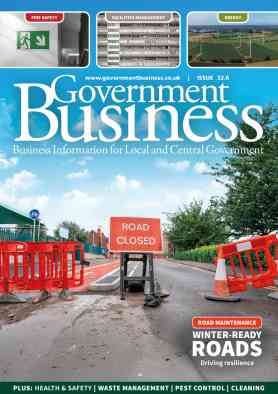High friction surfacing: Improving road safety
 High friction surfacing is a proven road surface treatment that increases skid resistance and reduces braking distance thereby reducing the potential for accidents. Typical locations for high friction surfacing include road junctions, approaches to traffic lights, pedestrian crossings and roundabouts as well as road stretches that have high accident levels. First used in the USA in the 1950’s using epoxy resin binders, the development of a range of alternative resin processes have increased surface durability and performance. There are two types of high friction surfacing: hot applied and cold applied. Hot applied works by adhesion through heat application to the road surface whilst cold applied works by adhesion to the road through chemical bond.
High friction surfacing is a proven road surface treatment that increases skid resistance and reduces braking distance thereby reducing the potential for accidents. Typical locations for high friction surfacing include road junctions, approaches to traffic lights, pedestrian crossings and roundabouts as well as road stretches that have high accident levels. First used in the USA in the 1950’s using epoxy resin binders, the development of a range of alternative resin processes have increased surface durability and performance. There are two types of high friction surfacing: hot applied and cold applied. Hot applied works by adhesion through heat application to the road surface whilst cold applied works by adhesion to the road through chemical bond.
With a skid accident reduction of often 50 per cent being reported the success of high friction surfacing speaks for itself: it saves lives and money. Treatment with high friction surfacing makes potentially high risk road locations far safer for both drivers and pedestrians and the financial savings of achieving this are considerable. With the associated accident and investigation costs of non-motorway fatal accidents calculated to be £1.4million, the application of high friction surfacing offers considerable financial value.
Market decline
Despite the benefits of high friction surfacing and significant market growth in the UK since the 1960s, over the last few years the market has witnessed a serious decline due in large part to local authority perceived concerns about surface life (durability) and increasing costs. However, since the 1980s this cost has been able to be balanced against a broader savings strategy with allocated accident investigation and prevention budgets proving the investment savings from high friction surfacing against the cost of accidents and casualties. A third issue was the lack of best practice guidance and practical operative training.
As the focal point for the road surface industry, RSTA with support from ADEPT (Association of Directors of Economy, Environment, Planning and Transport), has now put in place new industry guidance to address client concerns over product durability. Two key documents have been published: a new Code of Practice and a new Service Life document. Both of these documents have been developed with full endorsement from ADEPT.
The Service Life of Surface Treatments establishes the service life of a range of road surface treatments including high friction surfacing and by doing so provides a nationally agreed baseline for durability. Having such an agreed baseline is invaluable for lifecycle planning and asset management. The service life is dependent upon a number of important factors including site location and traffic volumes, surface preparation, method of working and workforce competence based on training and qualifications. The service life for hot applied high friction surfacing ranges from 3–5 years giving a mid-point of 4 years. For cold applied high friction surfacing the service life ranges from 5–11 years giving a mid-point of eight years.
The Code of Practice for High Friction Surfacing provides best practice guidance for ensuring that the baseline service life is achieved. Aimed at both client and contractor, the Code examines the application of both hot and cold high friction surfacing systems and provides practical guidance and technical details for their specification and installation. All issues concerning planning, health and safety and work execution are examined and full reference is made to relevant regulations, standards and training. In all, the Code provides definitive guidance on the right way to specify and apply high friction surfacing.
Training
A common theme to both the Service Life of Surface Treatments and the Code of Practice is the need for practical NVQ level training to ensure operative and supervisor competence and technical knowledge. Here, the RSTA has developed training courses specific for high friction surfacing that is appropriate for both NVQ Level 2 and 3. In addition, RSTA with ConstructionSkills is developing Specialist Up-skilling programmes for a number for road surface treatments leading to NVQ Level 2 including high friction surfacing.
High friction surfacing offers a wide range of benefits not least of which is saving lives and money. The RSTA is well placed to forward its wider take-up by working with local highway authorities to demonstrate that the issues over cost and durability have been addressed and that the best practice guidance and training necessary for consistent, high quality application and after-care are readily available and are being signed-up to by both clients and contractors.
Further information
Copies of The Service Life of Surface Treatments and the Code of Practice for High Friction Surfacing are available as downloads from www.rsta-org.com/publications. Details of training courses are available on www.rsta-uk.org/calendar


